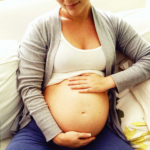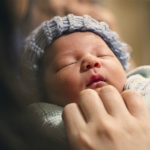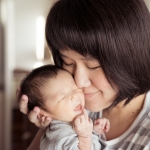While a handful of studies have assessed the risk for congenital malformations in infants exposed to antipsychotic agents, there is even less information regarding neonatal outcome in this population. In 1992, it was first reported that infants exposed to first-generation antipsychotic medications exhibited increased muscle tone, tremulousness, and poor motor functioning when assessed within a few days of delivery.
Early last year, the U.S. Food and Drug Administration (FDA) updated the drug labels for all antipsychotic medications, including the newer atypical agents, in order to include more detailed information regarding the use of antipsychotic drugs during pregnancy. The new drug labels were prompted by data gathered through adverse event reporting in a total of 69 infants and warn of the potential risks for abnormal muscle movements (extrapyramidal signs or EPS) and withdrawal symptoms in newborns exposed to these drugs during the third trimester of pregnancy.
The use of atypical antipsychotic medications has risen dramatically over the past few years, and this class of medications is now prescribed for a broad spectrum of psychiatric illnesses, including schizophrenia, bipolar disorder, major depression, and various anxiety disorders. Despite the growing use of these medications, clinicians have very little information regarding their reproductive safety. A new study published in the Archives of General Psychiatry provides additional information regarding the use of antipsychotic medications during pregnancy, assessing motor functioning in exposed infants at 6 month of age.
In this prospective study, 309 mother-infant pairs were examined at 6 months postpartum. The group included 22 infants exposed to antipsychotics; infants who were either exposed to antidepressants (n=202) or no psychotropic agents (n=85) were used as controls. There was no minimum level of exposure required for inclusion and dosage and timing varied according to patient need. Examiners blinded to medication exposure status administered a standardized examination of neuromotor function (Infant Neurological International Battery [INFANIB]) which assesses posture, tone, reflexes, and motor skills.
Antipsychotic exposures included:
- First-generation antipsychotics, all haloperidol (n=9)
- Second-generation antipsychotic (n=12; aripiprazole (n=1), olanzapine (n=5), quetiapine (n=5), risperidone (n=3), and ziprasidone (n=1), more than one (n=3)
- Both first- and second-generation antipsychotics: haloperidol and ziprasidone (n=1).
At 6 months of age, infants exposed to antipsychotics showed significantly lower INFANIB scores (mean=64.71) than those with antidepressant (mean=68.57) or no psychotropic (mean=71.19) exposure. Only 19% of infants prenatally exposed to an antipsychotic demonstrated normal neuromotor performance. The INFANIB scores were also significantly affected by maternal psychiatric history, including depression, psychosis, and overall severity/chronicity of illness, indicating that exposure to maternal illness, as well as exposure to medication, may negatively impact functioning.
The strengths of this study include its prospective design, the inclusion of controls, and the use of raters blinded to the mother’s medication status. There are, however, some limitations. The sample of antipsychotic-exposed infants was small, only 22, and they were exposed (as a group) to both first- and second-generation antipsychotics, which have very different effects on the dopaminergic and serotonergic neurotransmitter systems.
In addition, the mothers who take antipsychotic medications are different, on a number of different variables, than the mothers who take antidepressants or who have no drug exposures. The researchers attempted to account for the impact of maternal psychiatric illness, but there may be other, less measurable, variables which may also affect outcomes. One might imagine that the postpartum environment provided by a mother who is treated for severe bipolar illness or schizophrenia may be very different from that provided by a mother with major depression or an anxiety disorder.
So does this study influence how clinicians should advise their patients regarding the use of antipsychotic medications during pregnancy? What we can tell our patients is that several studies have raised concerns regarding a higher risk of poor motor functioning in children exposed to antipsychotic medications. However, we need more data to better understand how maternal illness may be contributing to this clinical picture and to fully appreciate the long-term implications of these clinical findings.
This is a particularly difficult clinical situation. Many women who take antipsychotic medications have severe or refractory illness and cannot reasonably consider discontinuing the antipsychotic or have no other clinically effective alternatives. Women who are pregnant or planning to conceive are forced to make decisions in the absence of adequate data regarding the reproductive safety of the antipsychotic medications.
To gather information on the atypical antipsychotics, we have founded the National Pregnancy Registry for Atypical Antipsychotics, based at Massachusetts General Hospital in Boston. We are now enrolling pregnant women aged 18-45 years who are treated with one or more atypical antipsychotics, and prospectively following them for a spectrum of outcomes, including organ malformations and maternal or newborn complications.
Those drugs include aripiprazole (Abilify), clozapine (Clozaril), ziprasidone (Geodon), paliperidone (Invega), risperidone (Risperdal), quetiapine (Seroquel), olanzapine (Zyprexa), asenapine (Saphris), and lurasidone (Latuda). Eligible patients for the MGH National Registry of Atypical Antipsychotics can enroll by calling 866-961-2388 or emailing registry@womensmentalhealth.org. Any clinicians who are interested in receiving print materials (including patient literature) about the Registry can sign up here.
Ruta Nonacs, MD PhD
References:
Johnson KC, LaPrairie JL, Brennan PA, Stowe ZN, Newport DJ. Prenatal Antipsychotic Exposure and Neuromotor Performance During Infancy. Arch Gen Psychiatry. 2012;Published online April 2, 2012.
The National Pregnancy Registry for Atypical Antipsychotics








Have you considered another arm to the registry – those women who need the antipsychotics and choose to stop taking them during the pregnancy. It would be unethical to encourage that choice, but some will make that choice and for that reason it may be easier to study that group after delivery vs. prospectively. It would be helpful to give clients the whole story about not only what happens to them when they stop their medications, but what happens to the baby. What if the babies of unmedicated mothers have worse outcomes than those of medicated mothers due to the neurologic storms the mothers encounters when they stop taking drugs in an effort to protect the baby?
Could you please recommend to me a gynecologist who knows these issues and practices in the greater Washington, DC metro area?
Thanks,
Laura